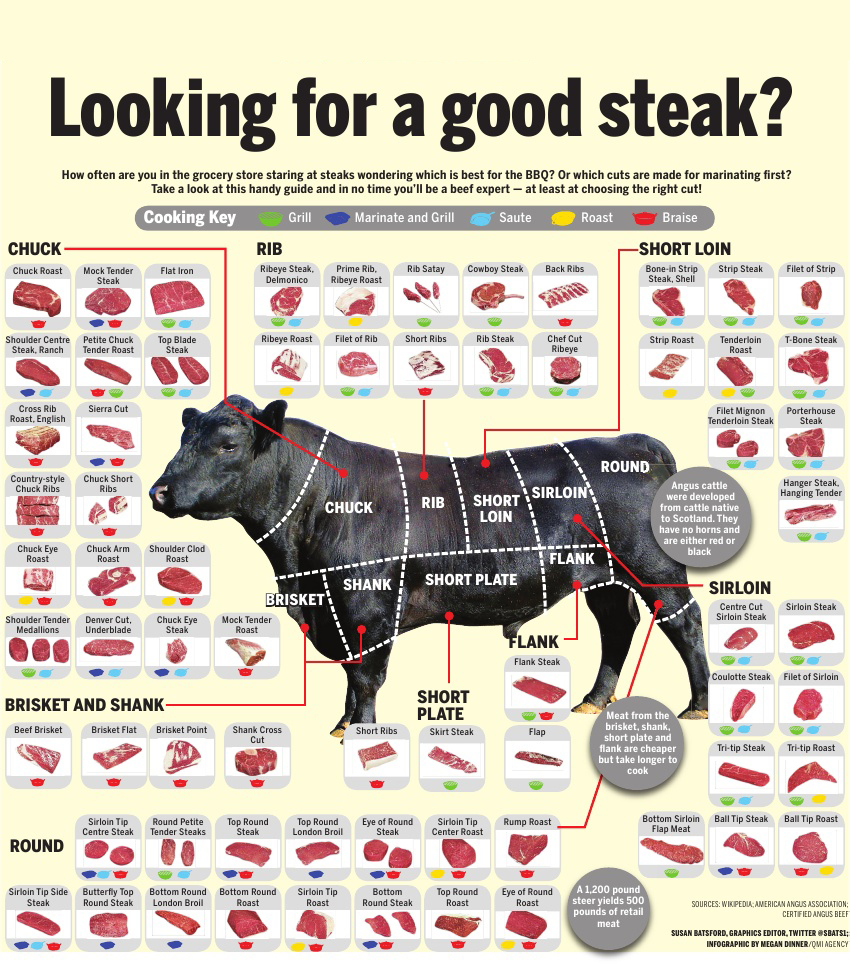Wholesome Beef

Pasture Raised Beef
We believe that cattle should be raised humanely, in a natural and low-stress environment. Our cattle are given no growth hormones or steroids and they are not fed antibiotics When calves are born, they are left to nurse their mothers as long as possible to ensure they have a healthy start on life. Our cows live a happy peaceful life where they have plenty of food, hay, water, shade, and land. Our herd sire, Bully, is 1/2 Angus 1/2 Gelbvieh. He is pastured with other cows and steers. He is very gentle and easy to handle. Bully, along with the rest of our cows, is fed a custom blended feed which we make right here on our farm. By making our own feed, we have no doubts about what our cows are eating and if it is good for them. Find out more about our feed by clicking here.
 What makes our beef different than what you can get in the store?
What makes our beef different than what you can get in the store?
- • Since our cow's diet is primarily grass, the meat will look different than store-bought meat. The fat will be yellow in color. This is caused by the beta-carotene in grass. The meat will be darker because it is lean.
- • Because it is lean, it tastes a little different. Like a fine wine, it is a cultivated taste.
- • It should be cooked differently. See below.
- • Farm direct beef costs more than store-bought beef because the government subsidizes feed lot operations which create artificially low prices.
Cooking Tips:
- • Farm-raised beef is ideal at rare to medium-rare temperatures. If you prefer meat well done, cook at a low temperature in a sauce to add moisture. A slow cooker is ideal.
- • Because farm-raised beef is low in fat, coat it with extra virgin olive oil or another light oil for easy browning. The oil will also prevent the meat from drying out and sticking to the cooking surface.
- • Very lean cuts like New York strips and sirloin steaks can benefit from a marinade. Choose a recipe that doesn't mask the flavor of the beef but will enhance the moisture content. For safe handling, always marinate in the refrigerator.
- • Never use a microwave to thaw farm-raised beef. Either thaw in the refrigerator or, for quick thawing, place the vacuum sealed package in cold water for a few minutes. Let it sit at room temperature for no more than 30 minutes. Don’t cook it cold straight from the refrigerator.
- • Tenderizing breaks down tough connective tissue, so use a mechanical tenderizer like the Jaccard. It’s a small, hand-held device with little “needles” that pierce the meat and allow the marinade or rub to penetrate the surface. You can find Jaccard tenderizers at Amazon.com.
- • Another way to tenderize is to coat a thawed steak with your favorite rub; put it into a plastic zipper bag; place on a solid surface; and, using a meat mallet, rolling pin, or other hard object; pound a few times. This will not only tenderize the meat, but will also incorporate the rub, adding flavor. Don't go overboard and flatten the beef unless the recipe calls for it.
- • Always pre-heat the oven, pan, or grill before cooking farm-raised beef.
- • Farm-raised beef cooks about 30 percent faster than grain fed beef. Use a thermometer to test for doneness and watch the temperature carefully. You can go from perfectly cooked to overdone in less than a minute. The meat will continue to cook after you remove it from the heat, so when it reaches a temperature ten degrees LOWER than the desired temperature, it’s done.
- • Let the beef sit covered in a warm place for eight to 10 minutes after removing from heat to let the juices redistribute.
- • Pan searing on the stove is an easy way to cook a farm-raised steak. After you’ve seared the steak over high heat, turn the heat to low and add butter and garlic to the pan to finish cooking.
- • When grilling, quickly sear the meat over high heat on each side and then reduce the heat to medium or low to finish. Baste to add moisture.
- • Never use a fork to turn the beef. Always use tongs.
- • When grilling burgers, use caramelized onions or roasted peppers to add low-fat moisture to the meat.
- • When roasting, sear the beef first to lock in the juices and then place in a pre-heated oven. Reduce the roasting temperature by 50 degrees F.

